Toyota 4Runner: Checking and replacing fuses
If any of the electrical components do not operate, a fuse may have blown. If this happens, check and replace the fuses as necessary.
 Vehicles without a smart key
Vehicles without a smart key
system
Turn the engine switch off.
Vehicles with a smart key system
Turn the “ENGINE START STOP” switch off.
 Open the fuse box cover.
Open the fuse box cover.
Engine compartment
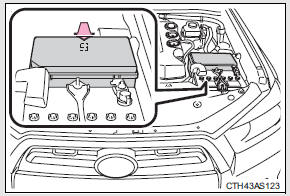
Push the tab in and lift the lid off.
Driver’s side instrument panel
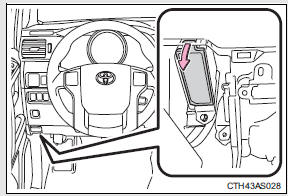
Remove the lid.
 After a system failure, see
After a system failure, see
“Fuse layout and amperage ratings” for details about which fuse to check.
 Remove the fuse.
Remove the fuse.
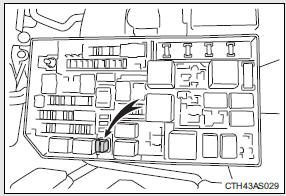
Only type A fuse can be removed using the pull-out tool.
 Check if the fuse is blown.
Check if the fuse is blown.
Type A
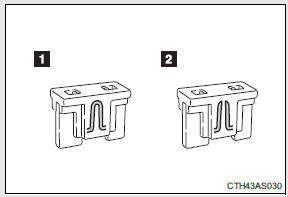
1. Normal fuse
2. Blown fuse
Replace the blown fuse with a new fuse of an appropriate amperage rating. The amperage rating can be found on the fuse box lid.
Type B
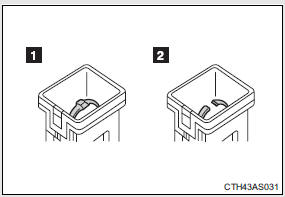
1. Normal fuse
2. Blown fuse
Replace the blown fuse with a new fuse of an appropriate amperage rating. The amperage rating can be found on the fuse box lid.
Type C
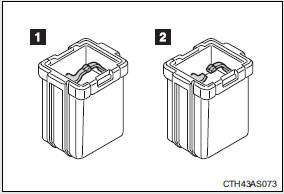
1. Normal fuse
2. Blown fuse
Replace the blown fuse with a new fuse of an appropriate amperage rating. The amperage rating can be found on the fuse box lid.
Type D
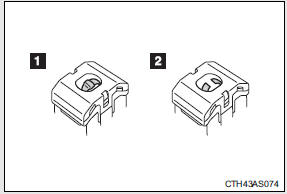
1. Normal fuse
2. Blown fuse
Replace the blown fuse with a new fuse of an appropriate amperage rating. The amperage rating can be found on the fuse box lid.
Type E
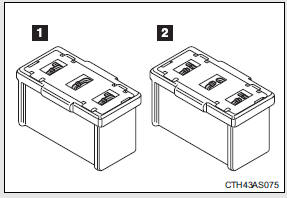
1. Normal fuse
2. Blown fuse
Replace the blown fuse with a new fuse of an appropriate amperage rating. The amperage rating can be found on the fuse box lid.
Type F

1. Normal fuse
2. Blown fuse
Contact your Toyota dealer.
Fuse layout and amperage ratings
Engine compartment
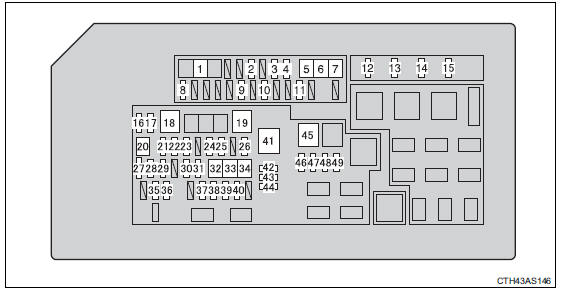
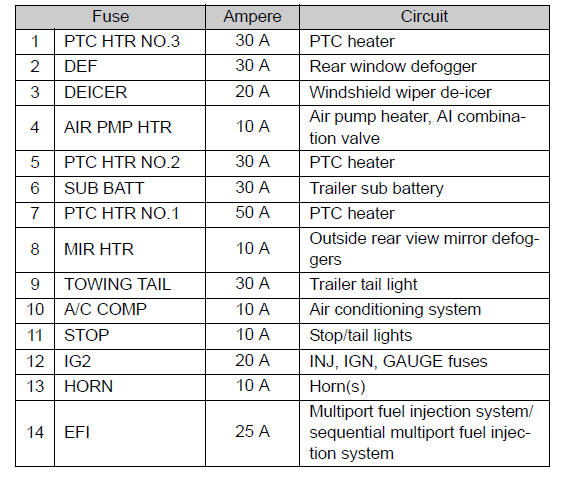
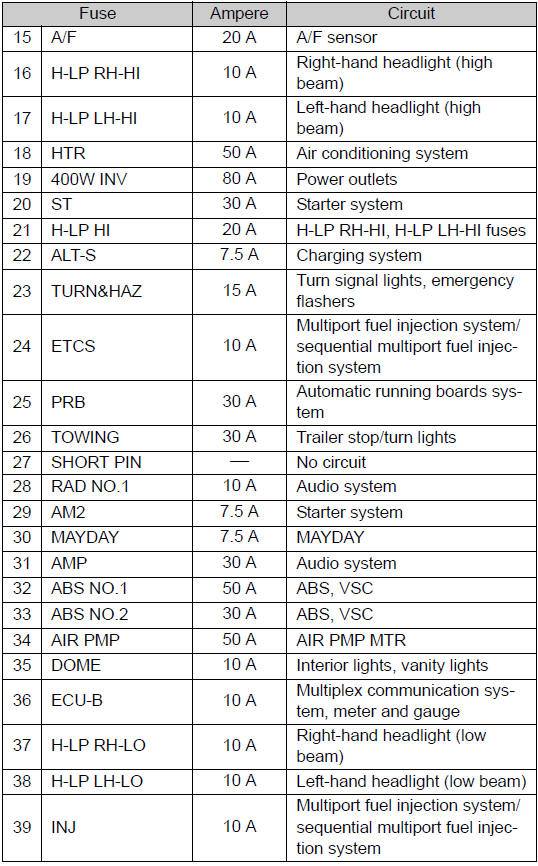
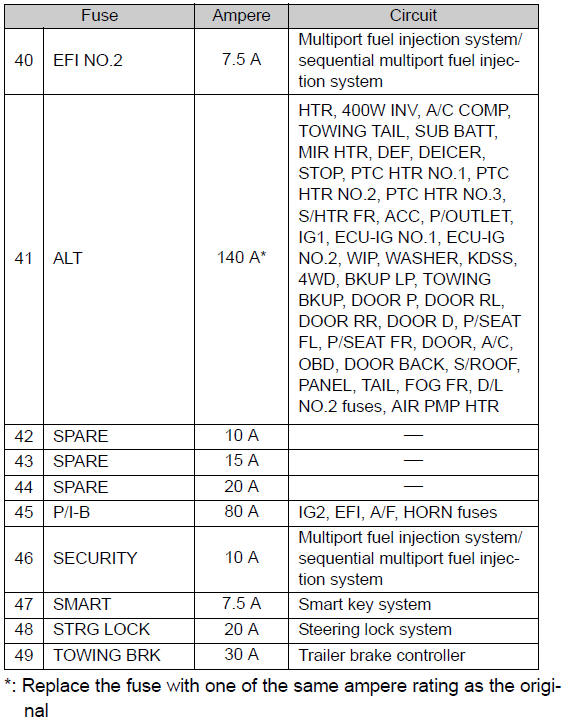
Driver’s side instrument panel

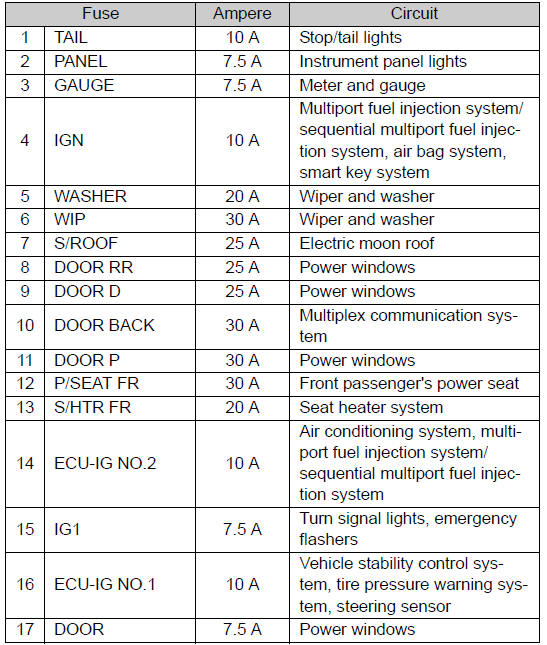
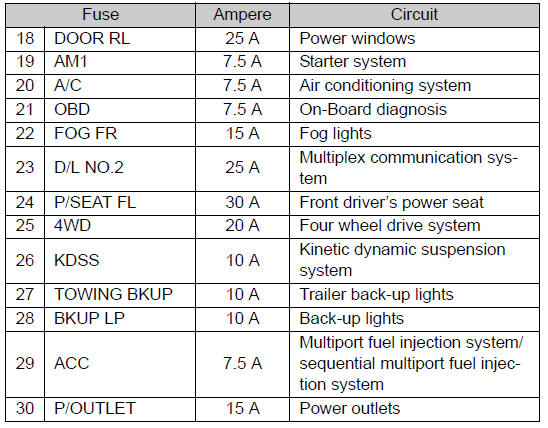
After a fuse is replaced
• If the lights do not turn on even after the fuse has been replaced, a bulb may need replacement.
• If the replaced fuse blows again, have the vehicle inspected by your Toyota dealer.
If there is an overload in a circuit
The fuses are designed to blow, protecting the wiring harness from damage.
CAUTION
To prevent system breakdowns and vehicle fire
Observe the following precautions.
Failure to do so may cause damage to the vehicle, and possibly a fire or injury.
• Never use a fuse of a higher amperage rating than that indicated, or use any other object in place of a fuse.
• Always use a genuine Toyota fuse or equivalent.
Never replace a fuse with a wire, even as a temporary fix.
• Do not modify the fuses or fuse boxes.
NOTICE
Before replacing fuses
Have the cause of electrical overload determined and repaired by your Toyota dealer as soon as possible.
 Wireless remote control/electronic key battery
Wireless remote control/electronic key battery
Replace the battery with a new one if it is depleted.
You will need the following items:
• Flathead screwdriver
• Lithium battery CR2016 (vehicles without a smart key system), or CR1632
(veh ...
 Light bulbs
Light bulbs
You may replace the following bulbs yourself. The difficulty level of
replacement varies depending on the bulb. If necessary bulb replacement seems
difficult to perform, contact your Toyota dealer ...
Other materials about Toyota 4Runner:
Lost Communication with ECM (U0100,U0142,U0155)
DESCRIPTION
The air conditioning amplifier communicates with the ECM, main body ECU (multiplex
network body ECU) and combination meter through the CAN communication system.
DTC Code
DTC Detection Condition
Trouble Area
...
Operation Check
OPERATION CHECK
1. CHECK FRONT POWER SEAT FUNCTION
(a) Check the basic functions.
Text in Illustration
*a
Sliding function
*b
Front vertical function
*c
Lifter function
...
0.027
